Sorted by date Results 26 - 50 of 169
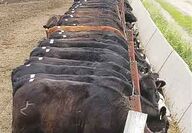
By now, corn silage harvest has finished across North Dakota. In well-packed, covered corn silage piles, the fermentation process to preserve the silage will be complete after about three weeks. This means that most of this year's silage crop is ready to feed to cattle. While ranchers may be able to calculate the input costs or the price of selling the corn silage to another producer, it pays to consider the value of feeding corn silage to their own cattle. "Corn silage has significant value for...
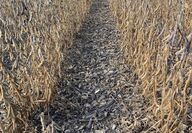
Soybean producers and crop advisers hunting for research-based soybean production recommendations should plan to participate in the Getting It Right in Soybean Production webinar on Tuesday, Dec. 19 starting at 8:30 a.m. The webinar is organized and will be conducted by North Dakota State University Extension and is supported by the North Dakota Soybean Council. This online-only meeting will be hosted on Zoom. "This soybean educational event will provide research updates and recommendations...
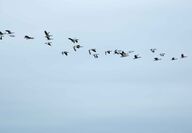
With the continued presence of highly pathogenic avian influenza (HPAI) in wild birds in North Dakota, North Dakota State University Extension specialists continue to encourage biosecurity practices for bird owners of all sizes and around wild birds. North Dakota has had no positive domestic cases since April. However, with positive cases occurring currently in Canada, the risk of transmission will increase as fall migration continues. Hunters participating in fall season should be aware of the...
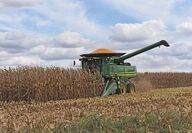
Variability in moisture content and maturity of corn in the fields will impact harvest decisions this season, according to Ken Hellevang, North Dakota State University Extension agricultural engineer and grain drying expert. "There is considerable variation this year due to the challenging spring, variation in rainfall, planting date, maturity rating, and growing degree days, so it is important to check each field and even various areas in a field," says Hellevang. Normally, optimum harvest...
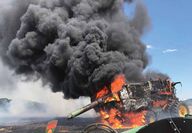
Soybean harvest is in full swing across North Dakota, with field corn and sunflowers to follow. Weather conditions have been very warm and mostly dry, with a few intermittent showers across the state to shut down harvest progress for a few days. Angie Johnson, North Dakota State University Extension farm and ranch safety coordinator, urges farmers to use any breaks in harvest for necessary maintenance that can help prevent equipment failures and fires. "Equipment fires, specifically combine...

Fall is my favorite season of the year. Our outside environment becomes a feast for our eyes as leaves change from green to gold, orange or red and float in the breeze. We are greeted by farmers markets and store displays with colorful red apples. Many varieties of squash are available. Some are green, others are orange or gold, and their rinds may be smooth or bumpy. I always enjoy the grocery store squash displays that look like a still-life portrait that has come to life. I almost do not...

Kristi Schultz and Brady Pelton have been selected to serve a three-year term on North Dakota State University's Rural Leadership North Dakota (RLND) Council. In addition to providing overall program direction, council members also develop policies and procedures, advocate for the program, maintain appropriate fiscal policies, and assist with class selection. "The RLND Council serves to help steer the program towards the future and ensures RLND continues to prepare and develop effective leaders...

Rural Leadership North Dakota (RLND) is a North Dakota State University Extension leadership development program designed to empower individuals from across the state, fostering their growth as leaders for rural communities and equipping them to navigate agricultural and rural policy and emerging trends that may impact North Dakota's future. Class X encompasses a wide array of talents and expertise, with members from various sectors such as ranching, farming, agricultural research, manufacturing...
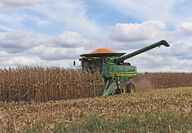
Variability in moisture content and maturity of corn in the fields will impact harvest decisions this season, according to Ken Hellevang, North Dakota State University Extension agricultural engineer and grain drying expert. "There is considerable variation this year due to the challenging spring, variation in rainfall, planting date, maturity rating, and growing degree days, so it is important to check each field and even various areas in a field," says Hellevang. Normally, optimum harvest...
Harvest timing and soybean moisture content can have a huge impact on soybean shatter losses, according to North Dakota State University Extension agricultural engineer Ken Hellevang.“There is considerable variation this year due to the challenging spring, variation in rainfall, planting date, maturity rating and growing degree days, so it is important to check each field,” says Hellevang. “There may also be considerable variation within a field.” Soybean moisture content in the field will fluctuate depending on drying conditions and air hum...

Despite the heat of summer, many ranchers are thinking ahead to fall and preparing to winter their cowherds. The first cutting of hay has been completed in many areas and ranchers are moving bales from the field to the lot for storage until they are fed. This period of bale transport is a great time to set up areas for bale grazing, say North Dakota State University Extension specialists. "Moving bales from the field straight to the area where they will be fed saves an extra step in bale...
Whether farms have cattle, horses, sheep or goats, summer management of the winter-feeding area is important. “Most of the management in your winter-feeding area begins with manure,” says Mary Keena, NDSU Extension livestock environmental management specialist. “That is true whether your winter-feeding area is corrals or a specific area of a field that you now feed on.” While summer tasks and activities often take precedence this time of year, Keena urges ranchers to look back on what went wrong last winter and take note of what needs maintenan...
Drought conditions in portions of North Dakota are forcing some farmers and ranchers to consider their options, according to North Dakota State University Extension specialists. Currently 30% of the state is experiencing some level of drought with several counties in northern North Dakota experiencing severe drought (D2). Producers in these areas are experiencing below normal forage production and poor pasture conditions. “Drought-affected pastures and native ranges generally do not produce adequate forage to maintain normal stocking r...
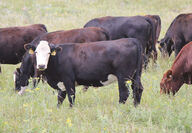
Anthrax continues to be a concern for cattle producers in North Dakota. Several more cases of anthrax in cattle have been confirmed in southwestern North Dakota. "This is a reminder to our cattle producers that the threat of anthrax is present," says Gerald Stokka, North Dakota State University Extension veterinarian. "It appears that during times of high rainfall or very dry conditions, the spores are uncovered and cattle are at risk of infection." Anthrax is a disease in cattle caused by...
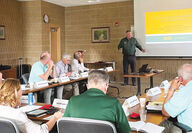
The North Dakota State Board of Agricultural Research and Education (SBARE) is seeking public input on needs in the state. SBARE provides the North Dakota legislature and governor with recommendations on how the North Dakota Agricultural Experiment Station and North Dakota State University Extension can address critical state needs and ensure that the state's investments on behalf of North Dakota citizens will yield great long-term dividends. The input will help shape SBARE's recommendations...
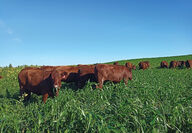
Another challenging year for spring moisture has created a deficit in hay production across much of the Dakotas and Minnesota, leaving ranchers to consider options to increase their forage supply. Lack of rainfall from mid-May to mid-June impacted forage production of perennial grass hay fields such as brome grass, crested wheatgrass, timothy and orchardgrass. State-wide reports have indicated as much as a 40% decline in hay production compared to the previous year. "Recent precipitation may...

Field days at North Dakota State University's (NDSU) Williston Research Extension Center (WREC) are set for July 12 and 13. NDSU research scientists will highlight their work. Greg Lardy, NDSU vice president for agricultural affairs, will attend the field day. The annual dryland agronomy and horticulture field day will be held Wednesday, July 12, at the WREC, 4.5 miles west of Williston on U.S. Highway 2. The event begins with registration at 3 p.m. Central time. The dryland crops tour starts...
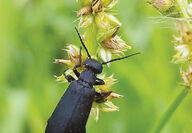
Blister beetles have made their appearance in North Dakota and are feeding on alfalfa fields. "The name 'blister beetle' stems from a naturally occurring toxin called cantharidin produced by the beetle that causes blistering of skin when the beetle is crushed and the toxin is released," says James Rogers, Extension forage crops production specialist at North Dakota State University's North Central Research Extension Center. Adult blister beetles are attracted to blooming alfalfa fields and...
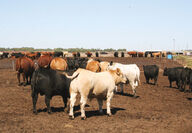
The Food and Drug Administration is changing guidance for using implants in beef cattle after June 2023. Implants for beef cattle are placed under the skin of the ear and promote growth and improve feed efficiency. "The new guidance from the FDA's Center for Veterinary Medicine redefines beef cattle's production phases, which will affect the label claims of existing and new drugs," says Zac Carlson, North Dakota State University Extension beef cattle specialist. "This affects implants for beef...

Highly pathogenic avian influenza (HPAI) is a disease carried by wild birds and affects domestic birds. Avian influenza is caused by the influenza Type A virus (influenza A). The virus is shed in the feces and respiratory secretions of infected birds and is able to survive for weeks in cool, damp environments. While the transmission rate from animals to humans is low, it is a zoonotic disease, meaning it can be shared between species. There have been several detected cases in wild mammals,...
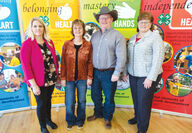
The North Dakota 4-H Foundation recognized its 4-H Hall of Fame inductee and five North Dakota 4-H Century Families during its Awards and Donor Recognition Luncheon in Bismarck March 28. "We're glad to recognize these 2022 honorees after a December blizzard postponed this recognition," said Deb Clarys, North Dakota 4-H Foundation chair from Center, ND. "These honorees represent the best of long-term service to North Dakota 4-H." Dean Aakre, recently retired North Dakota 4-H activities...
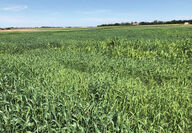
This year's long winter and late spring have eaten into livestock hay supplies. "North Dakota ranchers will need another good year of hay production to restore what was fed during this winter and build a cushion for future hay demands created by environmental conditions," says James Rogers, North Dakota State University Extension forage specialist. NDSU Extension specialists recommend several annual forage crops that will produce a quality hay product that can meet nutritional needs of many...

Youth will be able to learn about safe farm and ranch practices during three statewide Farm Safety Camps that North Dakota State University Extension is hosting this year. Camping dates and location are: - May 23-25, Williston State College Campus, Williston - May 30- June 1, NDSU Campus, Fargo - June 26-28, Bismarck State College Campus, Bismarck The camps cover the basics of safe tractor and machinery operation, general farm hazards, livestock handling, use of personal protective equipment,...
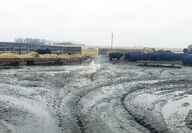
Ranchers should make plans for moving feed and livestock to higher ground before flooding this spring, according to North Dakota State University Extension specialists. The latest flood forecast shows a high probability of moderate to major spring flooding along the Red River Basin, as well as minor to moderate flooding potential along portions of the Souris River. In addition to riverine flooding, there is the potential for overland flooding due to snowpack across the state. The risk of...
Flooding is expected in some rural areas,” says Ken Hellevang, North Dakota State University Extension agricultural engineer. “Now is the time to prepare before water accumulates on the farmstead. Observe where water flows and ponds during the snow melt and consider what needs to be done to reduce future problems.” The National Weather Service shows the snow water content across much of North Dakota to be 4 to 6 inches. Even with the drought conditions across the state last fall, water ponding and runoff are expected. The snow water equiv...